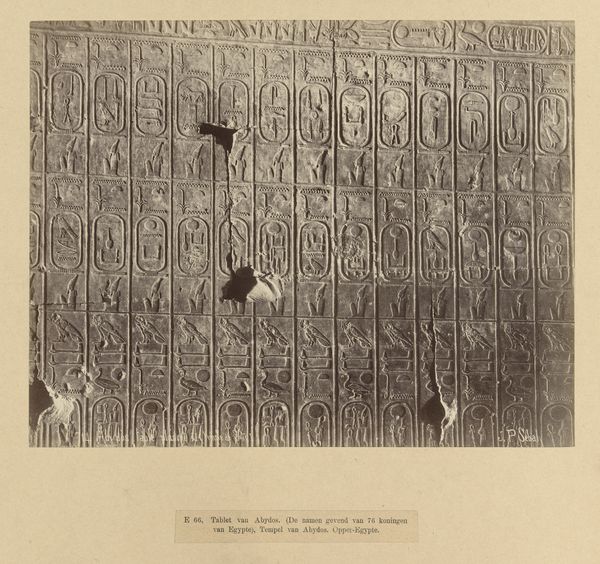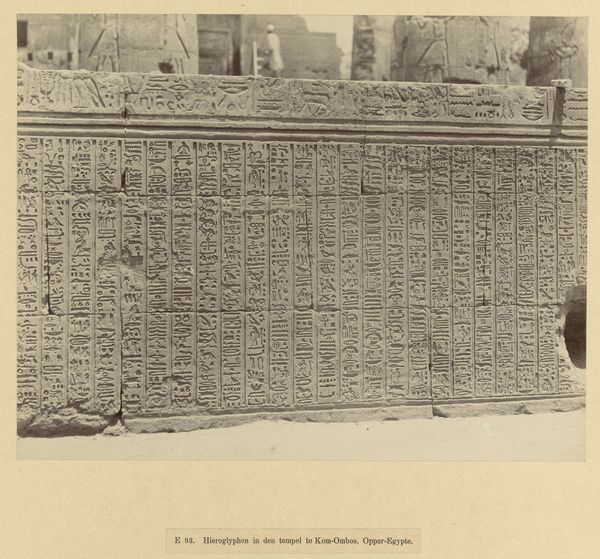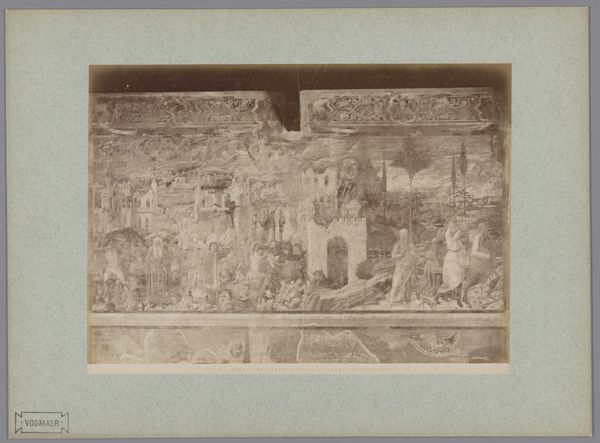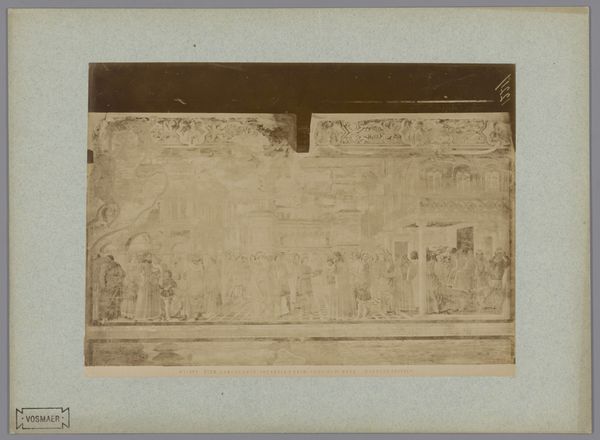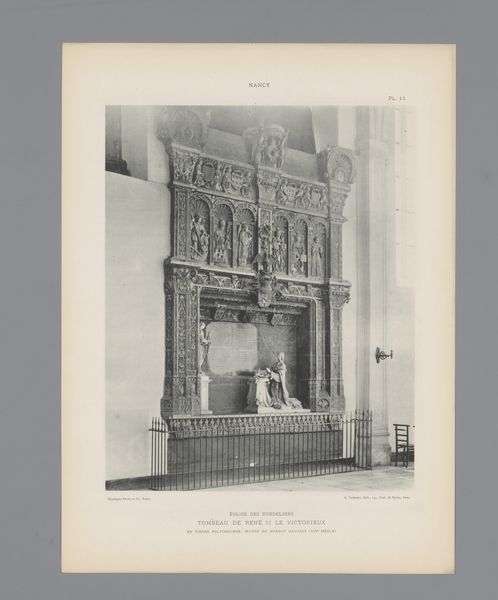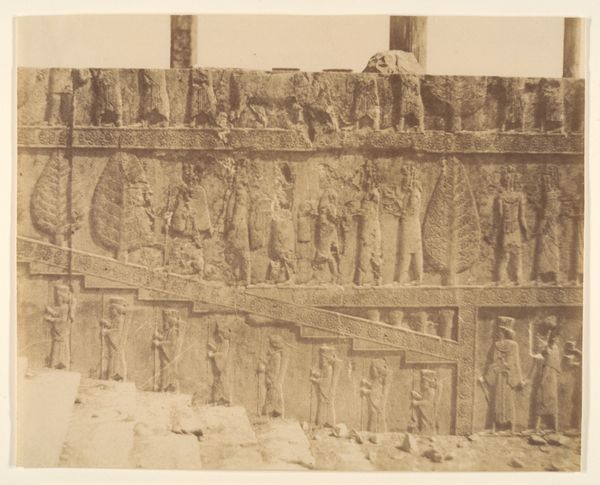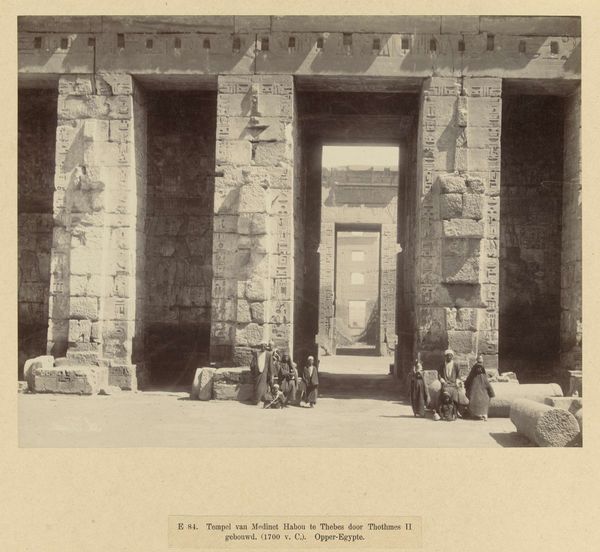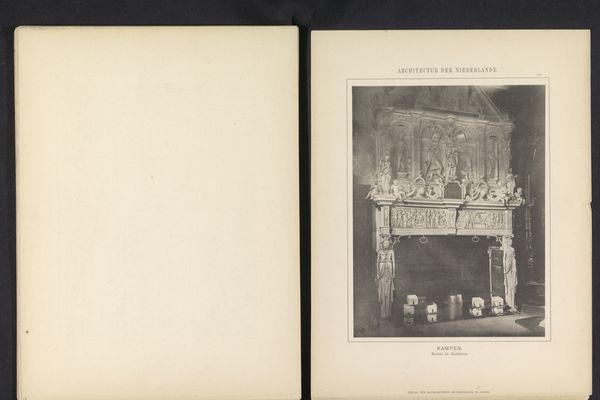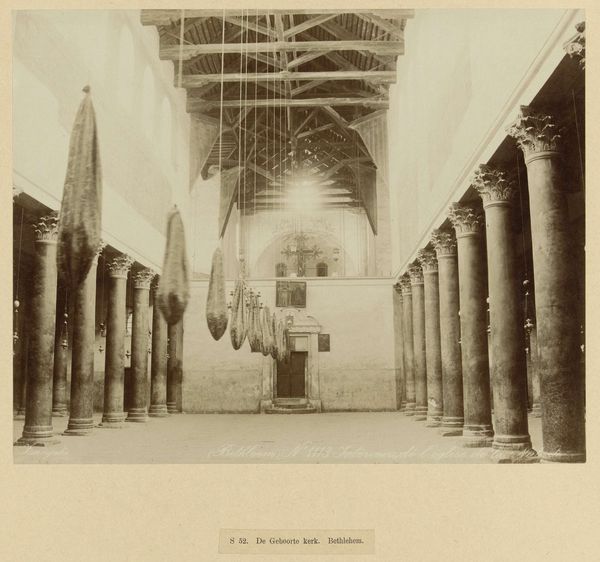
#
pencil drawn
#
photo of handprinted image
#
aged paper
#
photo restoration
#
light coloured
#
white palette
#
tonal art
#
repetition of white colour
#
soft colour palette
#
columned text
Dimensions: height 200 mm, width 256 mm, height 466 mm, width 555 mm
Copyright: Rijks Museum: Open Domain
This is a photograph of a wall painting from the tomb of Pharaoh Seti I in Thebes, Upper Egypt, around 1400 BCE. The image is of a highly stylized painting depicting what appears to be the journey of the Pharaoh into the afterlife. It is made in accordance with a rigid set of visual codes in which, for example, the Pharaoh appears larger than other figures to denote his social importance. The afterlife and the journey into it was a central part of the religion of Ancient Egypt. The production of such images was commissioned by the ruling class of the time, the Pharaohs. Of course, as a photograph it represents a modern appropriation of Ancient Egyptian culture. This photograph is now stored at the Rijksmuseum. The modern museum and its classification systems are the product of the enlightenment, and the photograph presents interesting questions of institutional history and cultural appropriation. To properly understand an image like this, it's important to understand its context and function, and as historians, we can do this through analysis of the image itself and by reading scholarly works on Egyptian history.
Comments
No comments
Be the first to comment and join the conversation on the ultimate creative platform.
